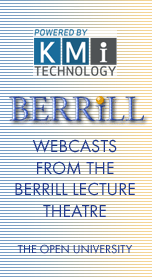
Event Summary
Open University research in the physical and environmental sciences focuses on the origins, systems and processes that form the stars and planetary bodies, the processes and natural systems that shape the environment of our habitable world now and in the past, and essential properties of a Solar System that allows life to develop on one of its planets.
In this programme of school lectures, jointly organised with the Denbigh Teaching School Alliance, we bring together four Open University scientists. These Open University scientists work at the cutting edge of physical and environmental science research, exploring aspects of planetary science, ecology and geochemistry, respectively. One of them is part of the team that is conducting research on the comet 67P as part of the European Space Agency’s Rosetta Mission.
The talks will be followed by an opportunity to ask questions as the four speakers return to the stage for a panel Q&A session.
Mercury: new views of the Suns' innermost planet
David Rothery, Professor of Planetary Geosciences, The Open University
Thanks to NASA’s MESSENGER (orbiting Mercury since March 2011) we now know far more about the closest planet to the Sun than was possible from ground-based astronomy and the Mariner-10 flybys in the 1970s. Through this talk you’ll find out more about what scientists know about this rocky planet, its disproportionately large iron core, and the dynamo processes there generate a magnetic field (unique among the terrestrial planets apart from Earth).
Back to the future II: mad for mud!
Dr Encarni Montoya, NERC Postdoctoral Research Fellow, The Open University
We are aware that planet Earth is different from the poles to the equator, and that we suffer climatic variations from year to year. Thanks to science we also know that a given location has not been always the same. Both the vegetation and climate have changed through time. We have been able to understand these changes thanks to the study of the past, which also can provide insights about our future world. How then do scientists measure and analyse environments that do not exist anymore or have not occurred yet? In this sequel to the 2013 talk by Frazer Bird, Encarni will explain how scientists act as detectives, piecing together the puzzle of environments that have been and could be.
Down to Earth: Translating space know-how to challenges nearer to home
Dr Geraint (Taff) Morgan, Project Officer, The Open University
After 10 years and a 4 billion mile journey around our solar system, Rosetta finally made it to comet 67P in August 2014. In November 2014 we succeeded in the first ever soft landing on a comet to analyse what it is made from. This was a truly remarkable achievement of science and engineering, generating widespread interest through media channels across the world. What have we scientists been doing between 2001, when we delivered the Ptolemy instrument to the Philae lander, and November 2014 when we landed on Comet 67P? The answer is bringing science and engineering back down to Earth. In this talk, Taff will discuss how space technology can be adapted for a series of healthcare applications. Come and hear how it is we can copy a dog, using scientific instruments to sniff cancer.
Moon river: is our nearest neighbour really dry?
Jessica Barnes, Post-Doctoral Research Associate, The Open University
For almost 25 years lunatics (people who study the Moon!) thought that our nearest neighbour was completely devoid of water. It is only in the last six years that we have re-examined the Apollo sample and lunar meteorite collections, and found that this longstanding paradigm may need revising. In this talk Jess will outline the latest discoveries of ‘volatiles’ (elements that easily become gasses) in lunar rocks and what these findings tell us about water inside the Moon, and where in our Solar System water may have originated.
Select from replays below: |
